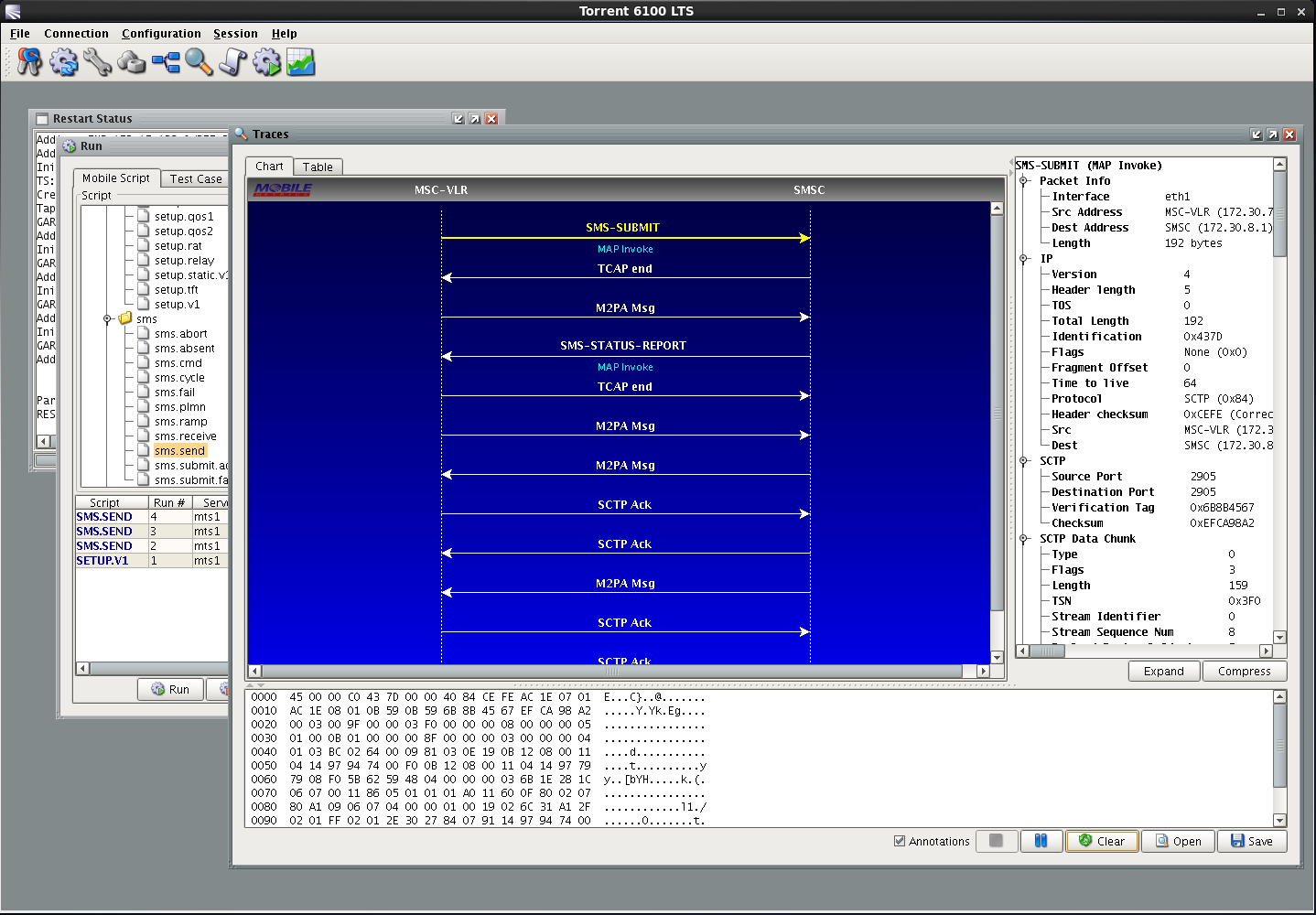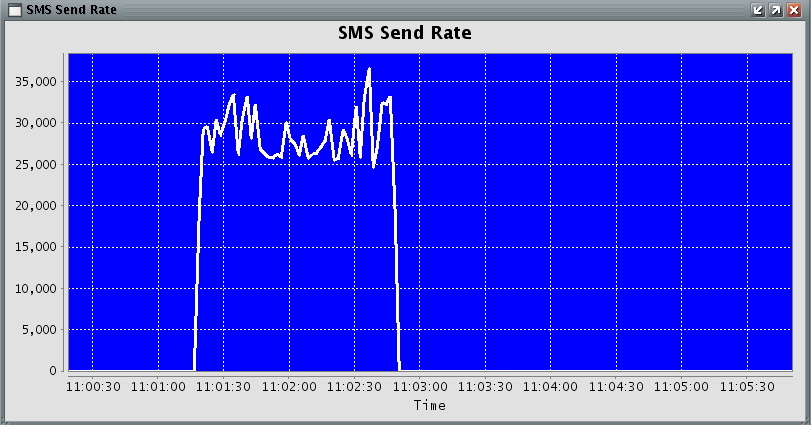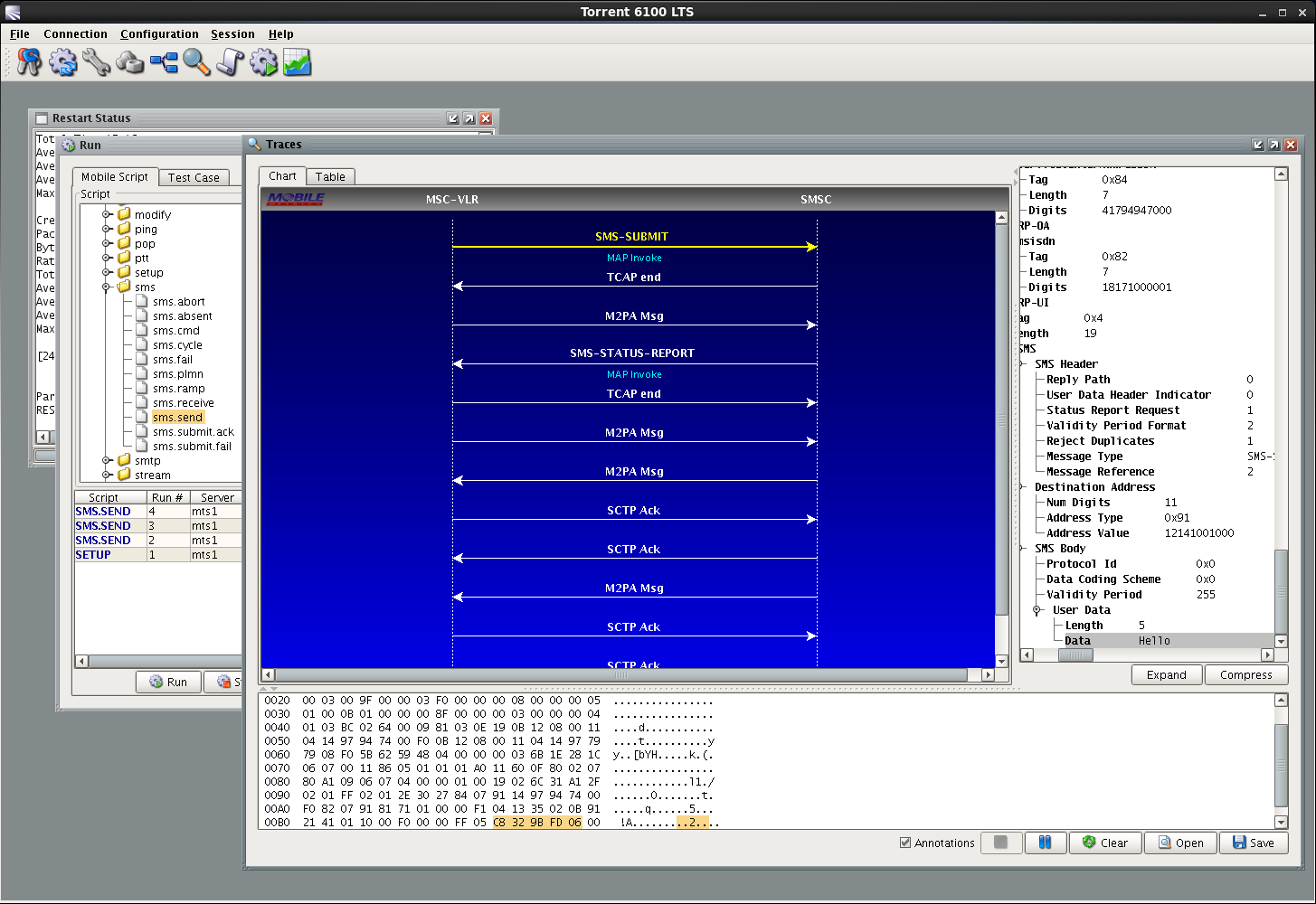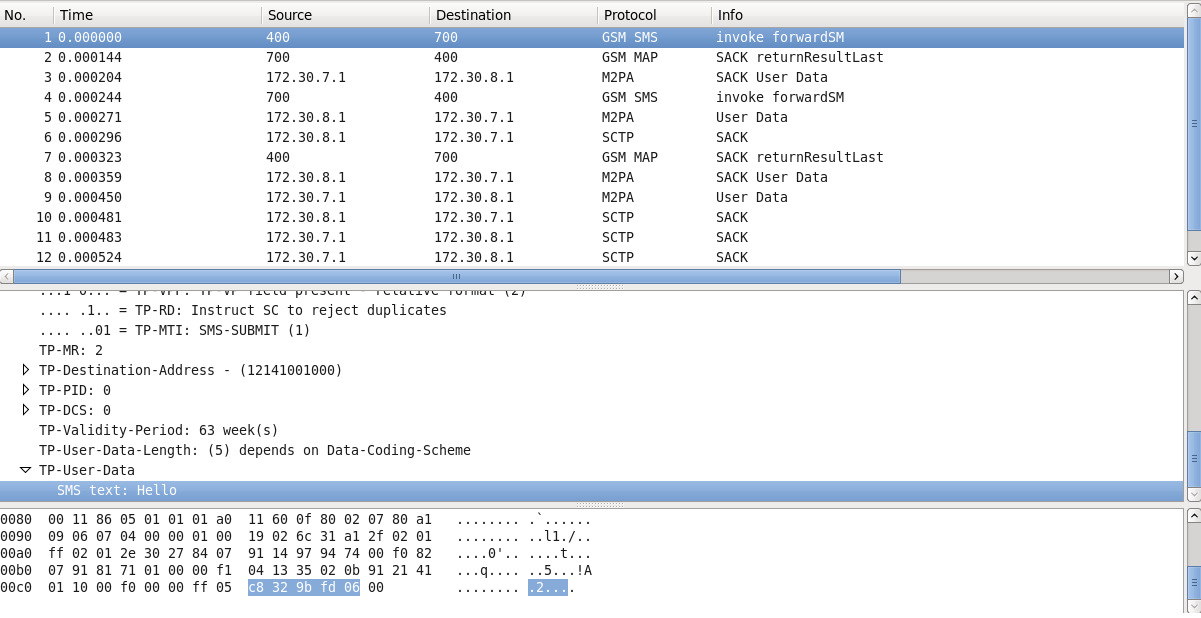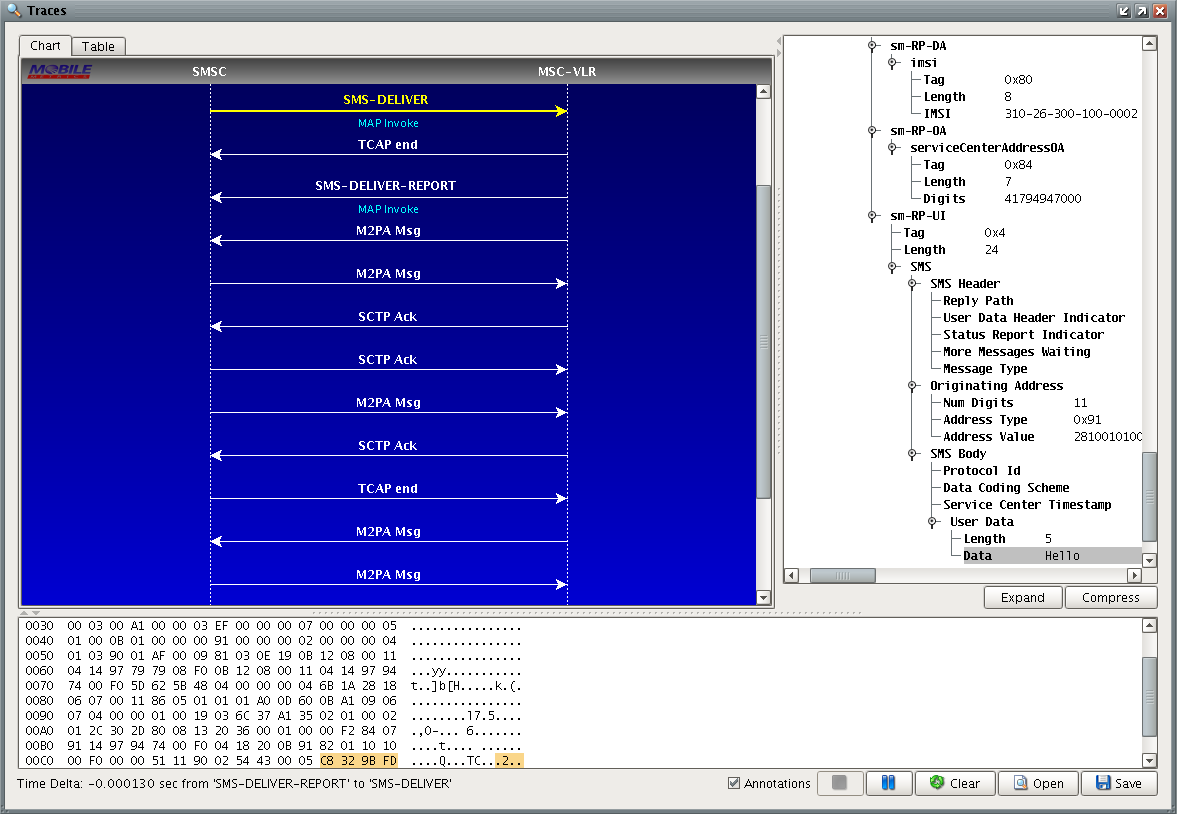A Comprehensive SMS Test Solution
Functional and Load/Stress Testing
For testing tens of thousands of SMS transactions per second (without even scaling up), the Torrent 6100's SMS test facility has you covered. Whether you're focused on SMS monitoring for security, or network performance monitoring and need full SS7 and SMS network emulation, or whether you're testing your SMSC or HLR, the 6100 make it easy to go where you need to. With it, you can comprehensively test SMS: from mobile originated flows to mobile terminated flows to error scenarios and more. You can break it down to single simple flow, or mix and match multiple complex concurrent traffic profiles to see how your system performs (i.e. perform load testing).
System Architecture
From an architectural perspective, the Torrent 6100's SMS test subsystem looks as follows:

Where the SIGTRAN stack involved consists of:
- MAP (GSM Mobile Application Part)
- TCAP (Transaction CApabilities Applicaiton Part)
- SCCP (Signalling Connection Control Part)
- MTP3 (Message Transfer Part Level 3)
- SCTP (Stream Control Transmission Protocol)
SMSC/HLR Test Topology
For concreteness, if deployed for both HLR and SMSC testing, the system topology would look as shown below:
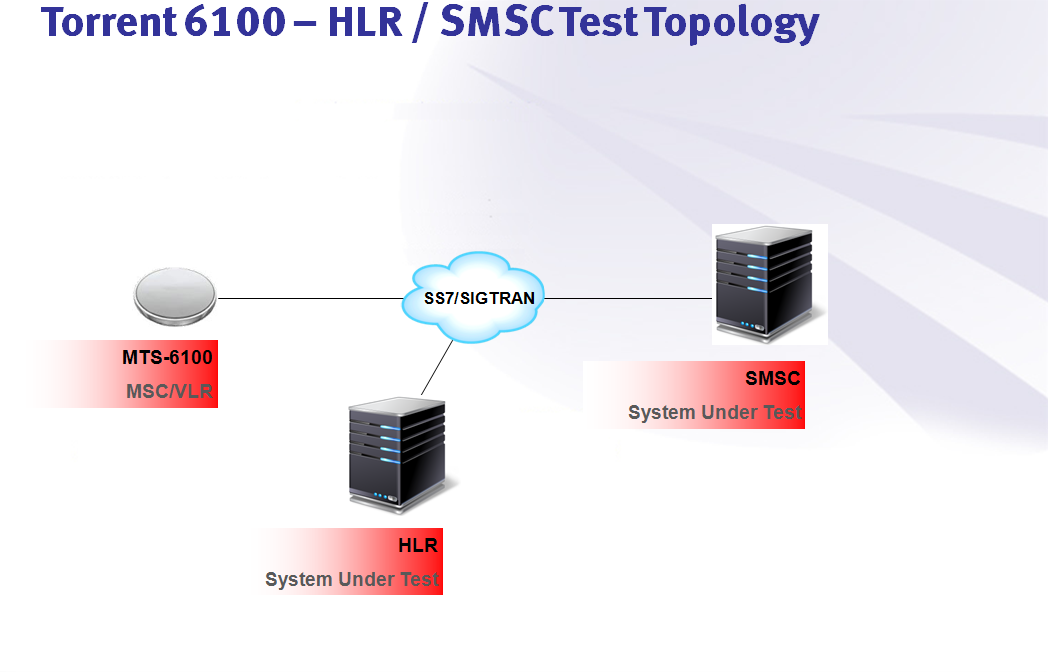
It's important to note that SMS may be tested concurrently with 3G/4G control and data traffic, if desired.
Mobile Originated SMS Transmission
Perhaps the most basic flow is a mobile originated text message, without a submission report request (i.e. submit ack):
Like everything else in the system you can pull up Wireshark if you like either directly on Linux, or externally to cross-check observations:
It's very easy to have the mobile request a submit ack, though it exacts a mild performance hit due to the extra messaging (both in live networks and in our virtual EPC):
Mobile Terminated SMS Transmission
Of course, the system can also generate and SMS messages to mobiles from the SMSC (querying the HLR for location info in the process):
Additional Flows and Capabilities
In additional to normal MO and MT flows, using the system you can easily generate typical error scenarios with ease - and that's even without editing the XML message templates:
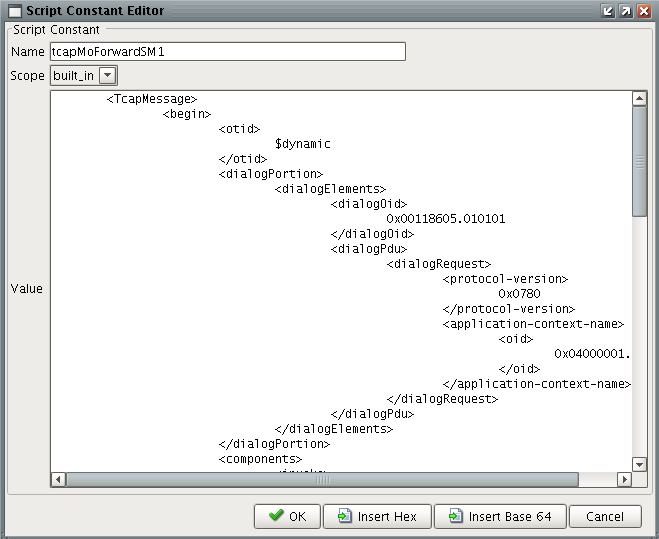
Beyond that, you can also ramp the size of the SMS messages being transmitted to test fragmentation at the SCCP level, etc, or have the system perform SMS-COMMAND transactions.

